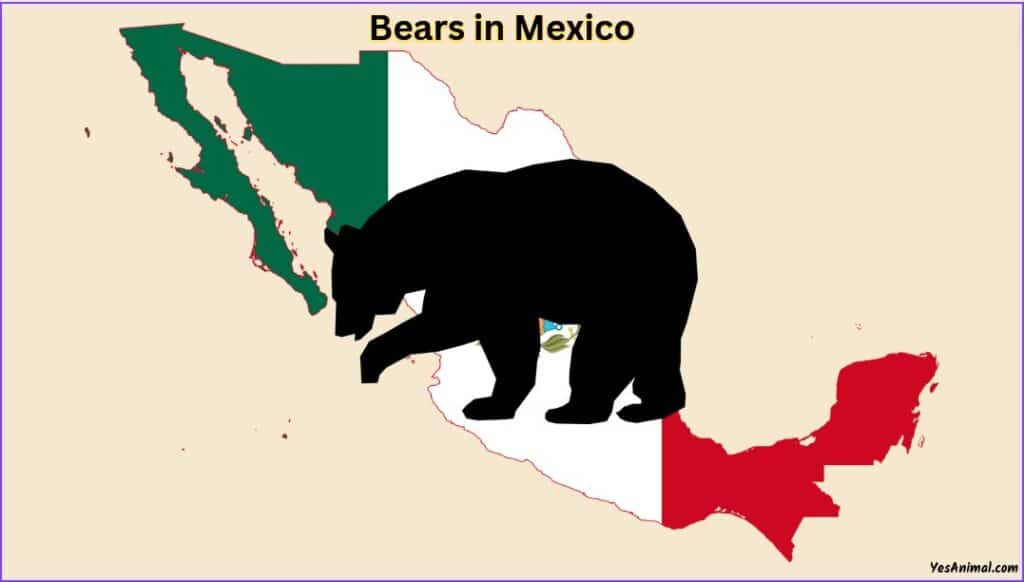Last Updated on November 27, 2023 by Amin Tawar

Standing as tall as 8 ft and weighing up to 800 lbs, the grizzly bear is a subspecies of brown bear that inhabits the northwestern United States and western Canada. But did you know that they were once also present in Mexico?
Yes, the Mexican grizzly bear was one of the largest and heaviest known mammals to live in Mexico that had a dark color and a reddish coat.
So without further ado, let us discuss this topics in detail: Are There Grizzly Bears In Mexico?
Are there Grizzly Bears in Mexico?
Currently, there are no Mexican grizzly bears in Mexico. By the end of 1964, the Mexican grizzly bears were considered as being extinct, after rumors of a few individuals were spotted on a ranch near the Yaqui River. In 1968, after a three-month survey but without success, it was presumed to be extinct, or possibly only extirpated.
However, in May of 1979, the Mexican government investigated the status of the Mexican grizzly bears, through a live trapping program where they found a small bear, that left behind tracks. But, in the location, they found no tangible evidence of the visual to proof that bears existed.
Also Check Our Guide On Bears In US
What Kind of Bears are found in Mexico?
Black bears: The only bear species that is presently inhabiting New Mexico is the black bear (Ursus americanus), particularly the New Mexico black bear subspecies (Ursus americanus amblyceps).
A male New Mexico black bear generally weighs up to 400 pounds and females weigh anywhere between 150 to 180 pounds. These bears come in a variety of colors, but most typically in cinnamon color. However, they might also be in black, reddish, brown, or even blonde stages.
Grizzly bears: At one time, brown bears (grizzly bears) were also found in the forests and grasslands of New Mexico. However, their fierce nature made immigrants to hunt them down to the verge of extinction. Acknowledging their numbers, the government declared them a protected species in the year 1927. But, it was too late to stop them from disappearing.
When was the last Grizzly Bear killed in Mexico?

The last Mexican grizzly bear in New Mexico is believed to be killed in the year 1931 in the north of Silver City. However, in May of 1979, the Mexican government investigated the status of the Mexican grizzly bears, through a live trapping program where they found a small bear, that left behind tracks. But, in the location, they found no tangible evidence of the visual to proof that bears existed.
Also Check Out Our Guide On Bears In United States
Facts About Mexican Grizzly Bear
Here are a few fun and interesting facts about Mexican grizzly bears that will help you know more about them:
The Mexican grizzly bear was one of the largest and heaviest mammals that lived in Mexico. A bear can reach up to a length of 1.82 m (6 ft 0 in) and weigh around of 318 kilograms (701 lb).
Grizzly bears were known to have silver fur and thus were often called as the as el oso plateado (the silvery bear) in Spanish They were smaller in size when compared to the grizzly bears in Canada and the United States.
Though they were known as brown bears they came in various colors from pale buffy yellow to grayish-white, yellowish-brown, and reddish. They have their longest fur hairs on their throat and flanks and their belly was sparsely haired.
Just like other brown bears, the Mexican grizzly bears were omnivores. Their diet mostly consisted of fruits, plants, and insects. It is also stated that it enjoyed ants, just like other brown bears. Periodically they also fed on carrion or small mammals.
Female Mexican grizzly bears delivered one to three cubs every three years or so. The cubs would remain with the mother for around two to three years.
Conclusion
I hope this article was informative for you to know everything about the Mexican grizzly bears.
Thank You For Reading!
Our Goto Source For This Guide